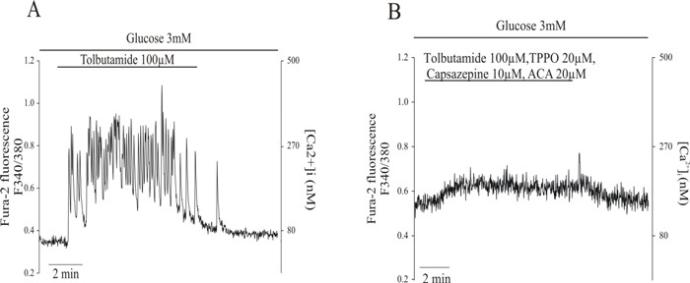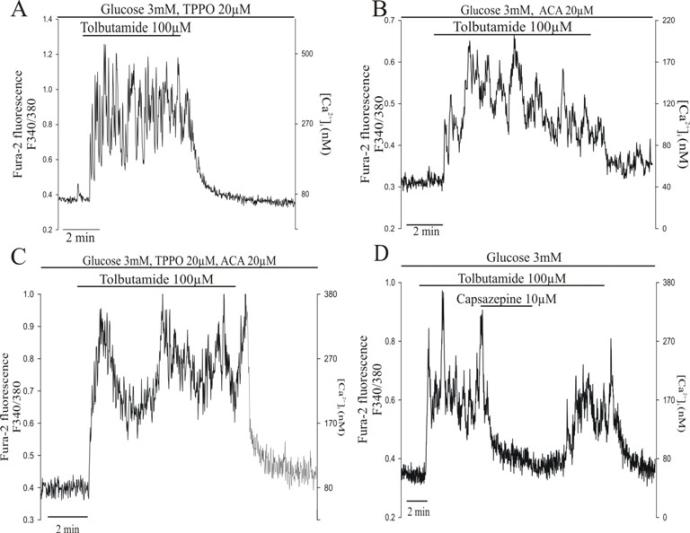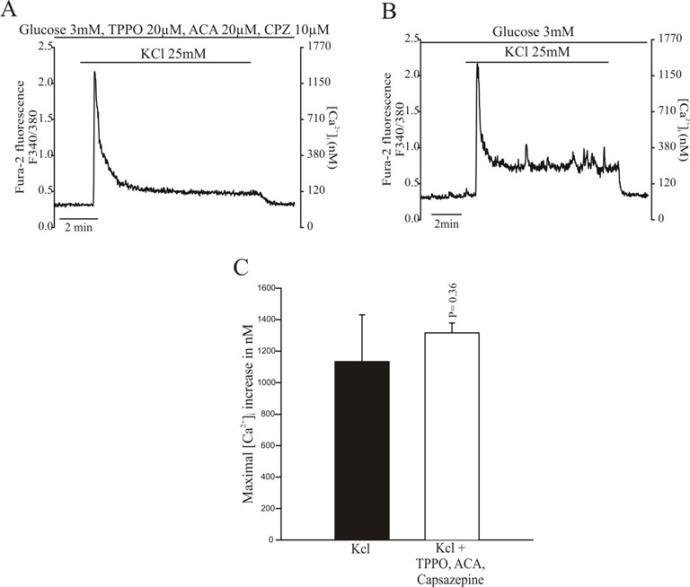
S5 cells exposed to tolbutamide (100µM) increased [Ca2+]i rapidly (A). Simultaneous application of TPPO (20µM), ACA (20µM) and capsazepine (10µM), which are antagonists of the TRPM5, TRPM2, and TRPV1 channels respectively inhibited the [Ca2+]i increase by tolbutamide (100µM) (B).

The cells were pretreated with different inhibitors of TRP channels for 10 minutes. The inhibitors were present in the perfusion fluid throughout the experiment. Application of TPPO (20µM), a TRPM5 channel blocker (A), ACA (20µM) a TRPM2 channel blocker (B) did not inhibit the increase of [Ca2+]i by tolbutamide (100µM). The combined application of both antagonists TPPO (20µM), and ACA (20µM) also did not inhibit the [Ca2+]i increase (C), However capsazepine (10µM) abolished the [Ca2+]i increase by tolbutamide(100µM) (D). When capsazepine (10µM) was washed out, [Ca2+]i increased again indicating that the effect of capsazepine (10µM) was reversible.

Application of TPPO (20µM), ACA (20µM), capsazepine (10µM) did not inhibit the KCl- induced [Ca2+]i increase (A). Control experiment with KCl (25mM)(B). The bar graph shows that the peak [Ca2+]i increase in the control and experiment groups did not differ significantly (p=0.36, n=4)(C).
Responsible for this page:
Director of undergraduate studies Biology
Last updated:
05/22/11
